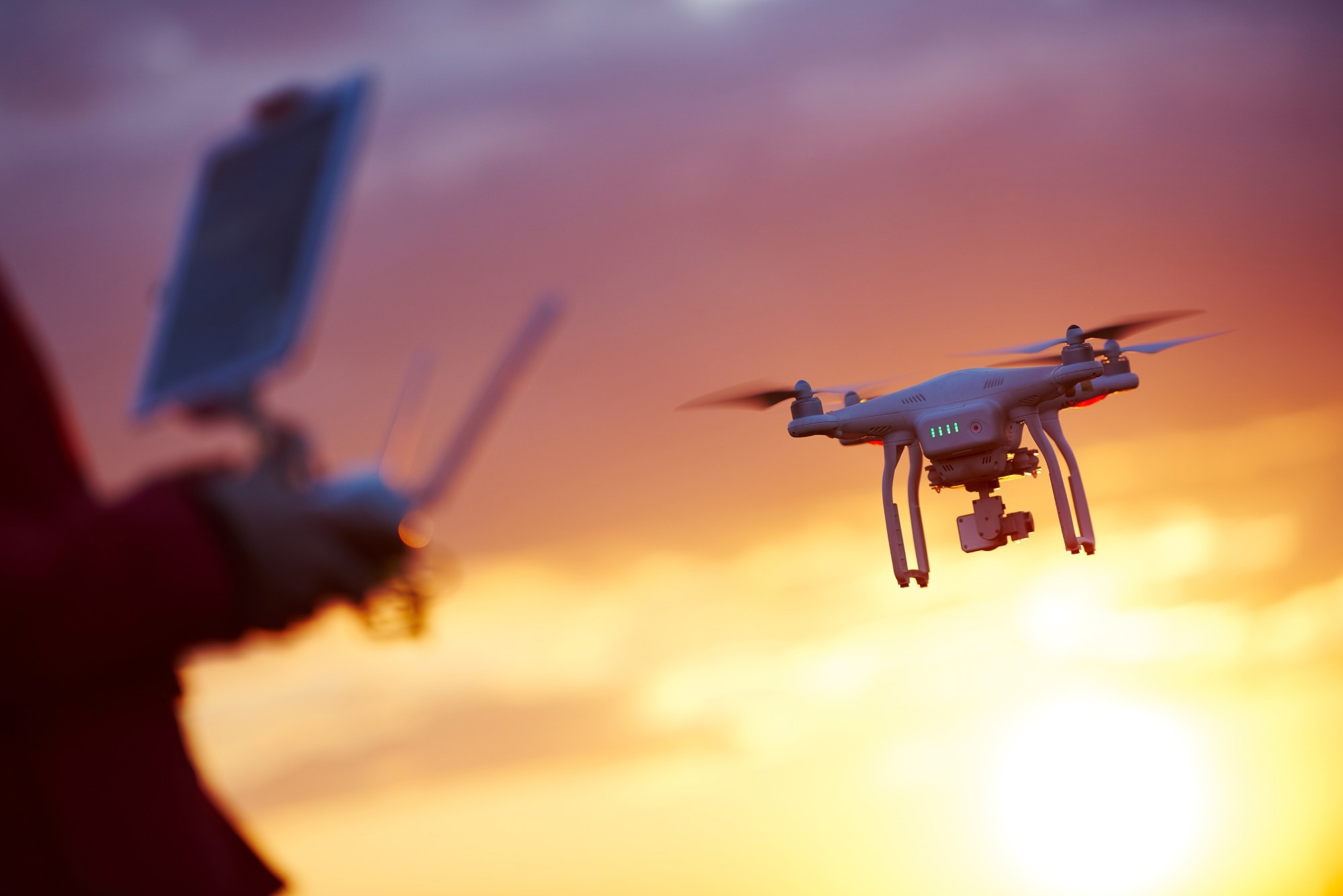Automated external defibrillators (AEDs) are commonly used to restore the heartbeat in cardiac arrest patients. These are usually provided at hospitals and some public facilities.
However, a new study shows that delivering them to the location of the cardiac arrest victim by drone could outpace the transport of the patient to hospital, restoring cardiac rhythm significantly sooner.
The study, which was carried out in Sweden, was published in The Lancet. Cardiac arrest out of hospital occurs quite commonly and leads to the victim’s death in nine of ten cases. The immediate treatment comprises cardiopulmonary resuscitation (CPR) and defibrillation with an AED within 3-5 minutes.
 Study: Drone delivery of automated external defibrillators compared with ambulance arrival in real-life suspected out-of-hospital cardiac arrests: a prospective observational study in Sweden. Image Credit: Dmitry Kalinovsky/Shutterstock.com
Study: Drone delivery of automated external defibrillators compared with ambulance arrival in real-life suspected out-of-hospital cardiac arrests: a prospective observational study in Sweden. Image Credit: Dmitry Kalinovsky/Shutterstock.com
Background
If given by anybody at the scene, without waiting for emergency medical services, up to 70% of the patients would survive, or at least half.
About 70% of out-of-hospital cardiac arrests occur at long distances from the AEDs, which bystanders rarely use. Ambulance arrival and defibrillation are both occurring later than before.
The drones equipped with AEDs were kept on notice at two locations with controlled airspace. These locations covered about 200,000 people. All calls for cardiac arrests in non-hospitalized patients resulted in the simultaneous sending out of standard emergency medical services and drones, which flew autonomously.
Cases excluded from this prospective study included children below the age of eight years, trauma, and cases where emergency medical services were on the scene. Unfavorable flying conditions or lack of flight approval by the air traffic controller, as well as locations in no-delivery areas, excluded the use of drones as well.
The data on drone flight and outcomes came from multiple sources, ranging from the dispatchers at the dispatch centers, organizations running ambulances, drone operators, and the Swedish Registry for Cardiopulmonary Resuscitation. The study occurred between April 21, 2021 and May 31, 2022.
What did the study show?
The researchers identified 211 suspected cases where cardiac arrest occurred out of the hospital. Drones were mobilized for just over a third of them.
Over 80% of drone flights delivered the AED successfully to 58 locations, though of these, two patients had already died, and one was treated by emergency medical services who were on the scene. The main cause for non-delivery was that the dispatcher was notified that the case was not one of cardiac arrest.
In all 55 cases, drone arrival and ambulance arrival were recorded. The drone-borne AED reached the patient 3 minutes before the ambulance in 37/55 cases, that is, in two out of three cases.
Of the 55 patients, half (n=18) were actually in cardiac arrest. The AED delivered by the drone was used in six cases (one-third of the patients). In two patients, cardiac rhythm was restored before the ambulance arrived. One of these lived beyond a month from the incident.
The AED was delivered within a range of 15 m from the patient or location in more than 90% of the total and within 30 m in all cases. No cardiac adverse effects of significance were reported. The AEDs were intact throughout the flight.
The median flight distance for the drone was 1.8 km, though the ambulances drove a median of 4.6 km to reach the same locations. The extra time gained is crucial as survival odds fall by 7-10% with each minute that goes by without treatment.
Even so, the median time from call to AED delivery was over seven minutes, which must be reduced considerably to within three to five minutes.
What are the implications?
The AED-carrying drones reached cases of suspected cardiac arrest, delivering the devices to the patients in 67% of the patients. The benefit to the patient’s time to treatment was apparent, saving time by a median of over three minutes. This allowed bystanders to treat the patient with the AED before the ambulance could arrive in six patients.
This is the first time that a study has shown the feasibility of delivering AEDs to the place where there is a victim of out-of-hospital cardiac arrest faster than an ambulance reaches the spot in most cases.
Ambulances take longer to respond, with greater variation in response times, compared to drones, which are both faster and less variable. Publicly available AEDs are important in saving lives after out-of-hospital cardiac arrests, but do not cover most locations where this event occurs.
In fact, only 6% to 11% of people in various industrialized countries typically live within 100m of an AED. However, this is the maximum distance expected for it to help treat cardiac arrest.
Thus, drones carrying AEDs could help many more people without lengthening the time gap to treatment, considering that in all cases, the AEDs were delivered within 30 m of the victim’s location. Volunteers might be recruited to respond to the cardiac arrest call to find an AED there.
More studies will be necessary to measure the cost-effectiveness of this measure on a universal basis, though this measure has already been assessed in several countries. AEDs on drones can be easily inspected for functionality, whereas up to a fifth of public AEDs in one study from Denmark were non-functional.
Despite the advantages of AED drones, “we believe that this novel method should not be seen as a substitute, but rather as a complement to existing ground-based AEDs”.
The greatest benefit might be in residential areas, the more so since home-based defibrillators have not produced an observable benefit so far.